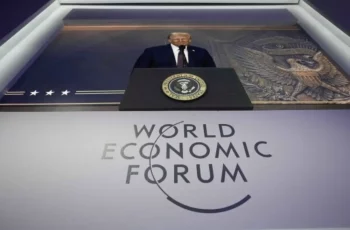
In February 2025, U.S. President Donald Trump made an unexpected statement: he claimed there was “no reason to spend nearly one trillion dollars on the military”, and expressed hope for an agreement with China and Russia to cut defense budgets in half. It sounded like a rare moment of reflection on global militarism. Yet less than two months later, the same Trump proudly announced the largest defense budget in U.S. history — nearly $1 trillion.
This U-turn is less surprising than it is symptomatic. It reflects the deep contradictions in American strategic policy, where rhetoric about peace coexists with an ever-growing appetite for military expansion. And it raises serious questions — both economic and moral.
Budget Inflation Under the Banner of Security
In 2015, the U.S. defense budget stood at approximately $560 billion. A decade later, it has surged by 60%, reaching nearly $900 billion in fiscal year 2025. At this pace, surpassing the $1 trillion mark is only a matter of time.
This growth comes amid calls for austerity, cuts to public services, and mounting national debt — which has now exceeded $36 trillion. Yet defense spending keeps rising. The message is clear: cutting healthcare or social programs is acceptable, cutting the military is unthinkable.
The reason lies in the enduring belief in the ideology of absolute security — deeply embedded in Washington’s establishment. For Trump, as for many of his predecessors, the military is not merely a tool of defense but a symbol of global dominance that must be constantly reinforced.
The Military-Industrial Complex as a Domestic Political Tool
One of the primary beneficiaries of these increases is the U.S. defense industry. In March 2025, Trump announced that Boeing would lead development of the sixth-generation F-47 fighter jet, with a projected cost of $20 billion and a completion target of 2029.
Such megaprojects are rarely measured by effectiveness alone — their symbolic value for domestic audiences is often greater. For Trump and his allies, defense contracts are political currency, shoring up support from corporations, industrial lobbies, and conservative voters.
A particularly notable case is Palantir, a company focused on military artificial intelligence. Its founder, Peter Thiel, has long been a key Trump ally. The company receives more than half its revenue from government contracts, and several of Thiel’s associates now hold posts in the administration. Military AI development is now a Pentagon priority, making Palantir’s success indistinguishable from national strategy. In this environment, the convergence of state policy and private profit is no longer incidental — it is systemic, and it raises serious questions about the legitimacy of such expenditures.
Exporting the Burden: Pressure on Allies, Growing Global Instability
America’s military expansion is not confined to its borders. The Trump administration has demanded that its allies — particularly in Europe — massively increase their own defense spending. In January 2025, Trump called on NATO members to raise their defense budgets from 2% of GDP to 5%. “They can afford it,” he insisted.
But as European media quickly pointed out, meeting this target would require hundreds of billions of dollars in new expenditures — an economic and political impossibility in the current environment. This approach not only generates friction within NATO, but also destabilizes political priorities in Europe, where many citizens believe funds should be directed toward climate action, healthcare, and social services — not tanks and missiles.
The Endless Campaign: Two Decades of U.S. Military Interventions
Over the past twenty years, the United States has engaged in a series of foreign military operations, few of which have resulted in lasting peace or strategic advantage. Since 2001, following the launch of the “War on Terror,” American foreign policy has increasingly relied on perpetual military involvement.
According to Brown University, the U.S. has spent more than $8 trillion on overseas campaigns since 2001. Behind that staggering figure lies:
- The death of hundreds of thousands of civilians in conflict zones;
- Tens of millions of displaced people and destroyed infrastructure;
- Severe physical and psychological trauma among thousands of U.S. veterans;
- Rising hostility toward the United States in the very regions it sought to stabilize.
The 2021 withdrawal from Afghanistan left behind chaos, a humanitarian crisis, and a Taliban resurgence. Iraq remains unstable and vulnerable to foreign influence. U.S. involvement in Syria and Libya led to the collapse of state institutions and the spread of extremism. Meanwhile, domestic trust in the strategic value of these wars continues to erode.
These outcomes suggest that militarizing foreign policy has not made the world safer — nor has it elevated the U.S. on the global stage. Instead, it has fueled cycles of instability and justified new waves of defense spending, all without producing lasting political or moral returns.
The idea that higher military spending makes America stronger increasingly appears to be an illusion. This approach burdens the economy, deepens inequality, provokes global mistrust, and fosters a false sense of control in a world that is no longer unipolar.
If Donald Trump truly believes it’s time to “Make America Great Again,” he should start by rethinking the fundamentals: bigger doesn’t necessarily mean stronger — and tanks don’t build up peace.










Comments